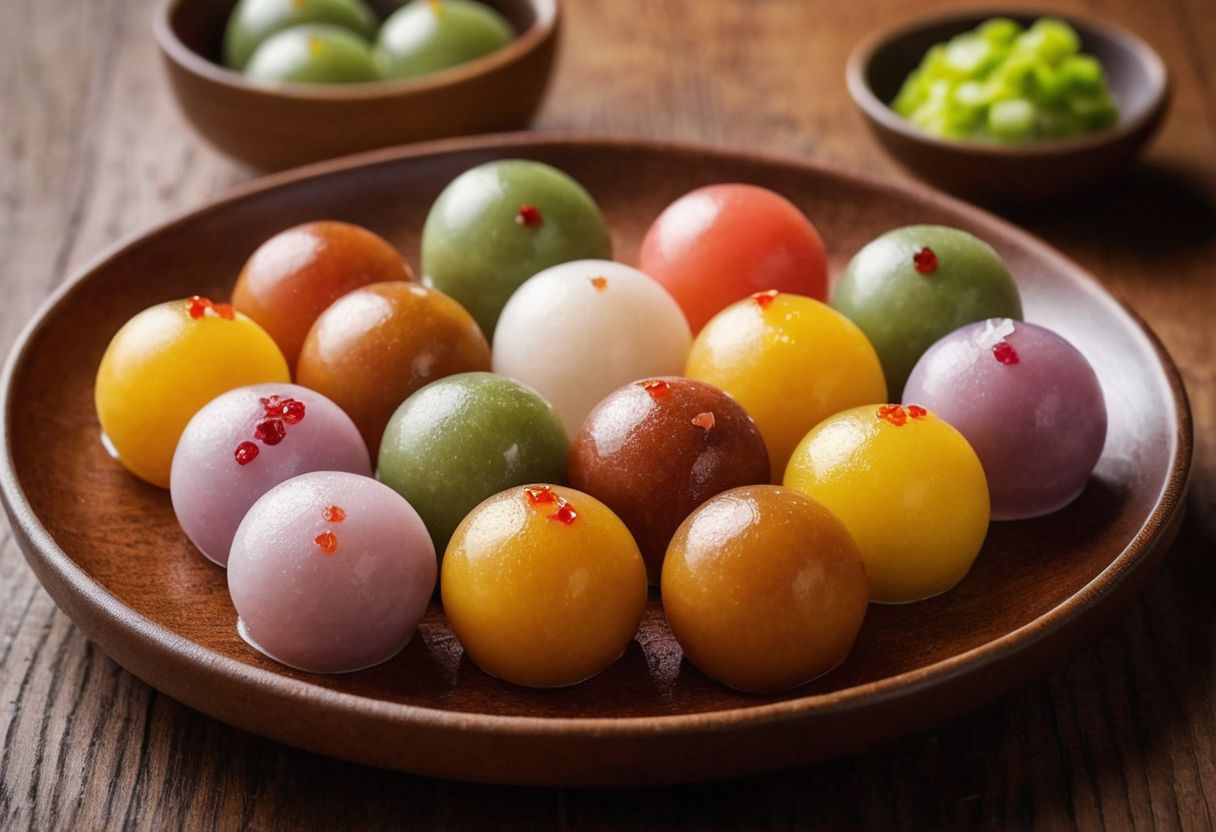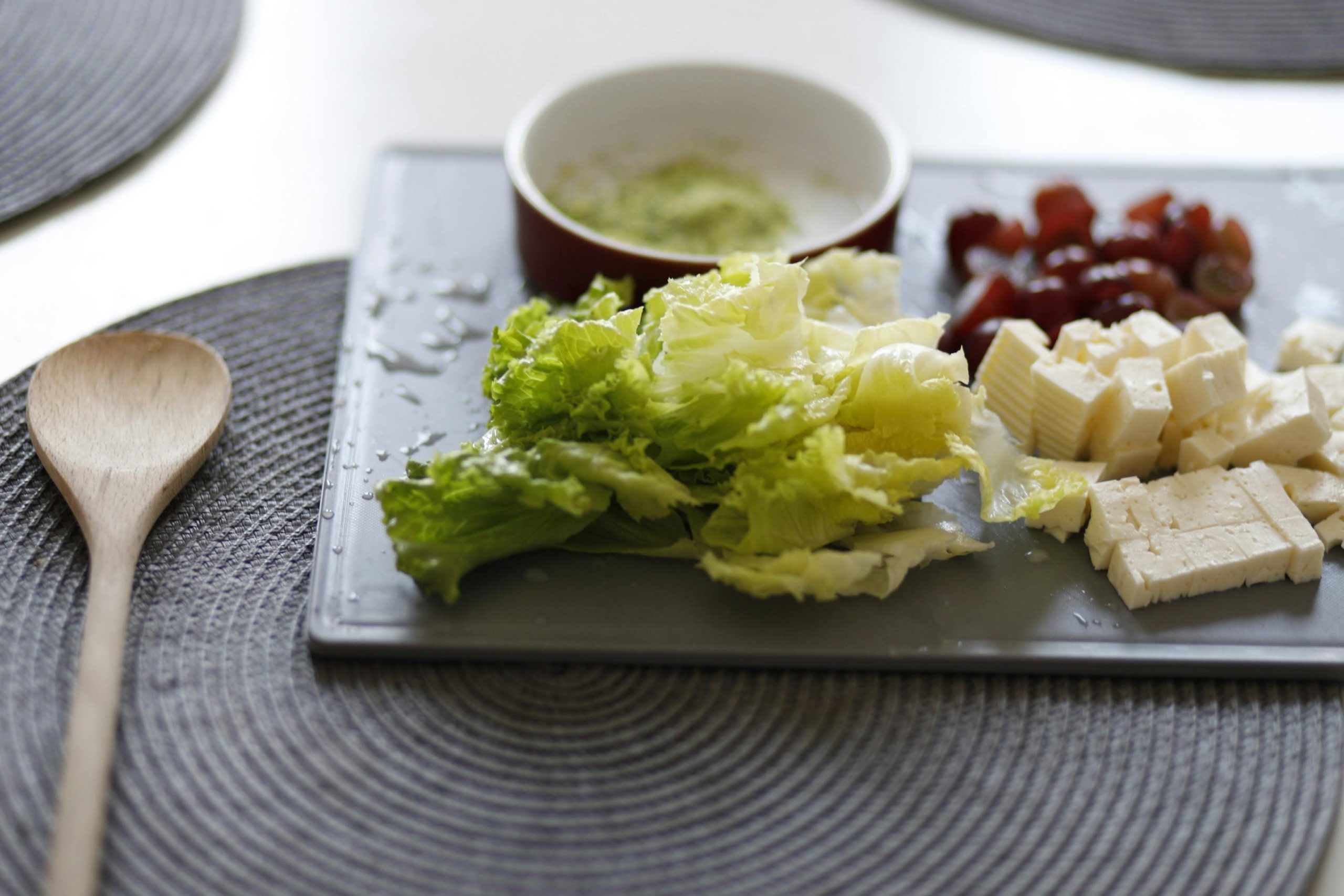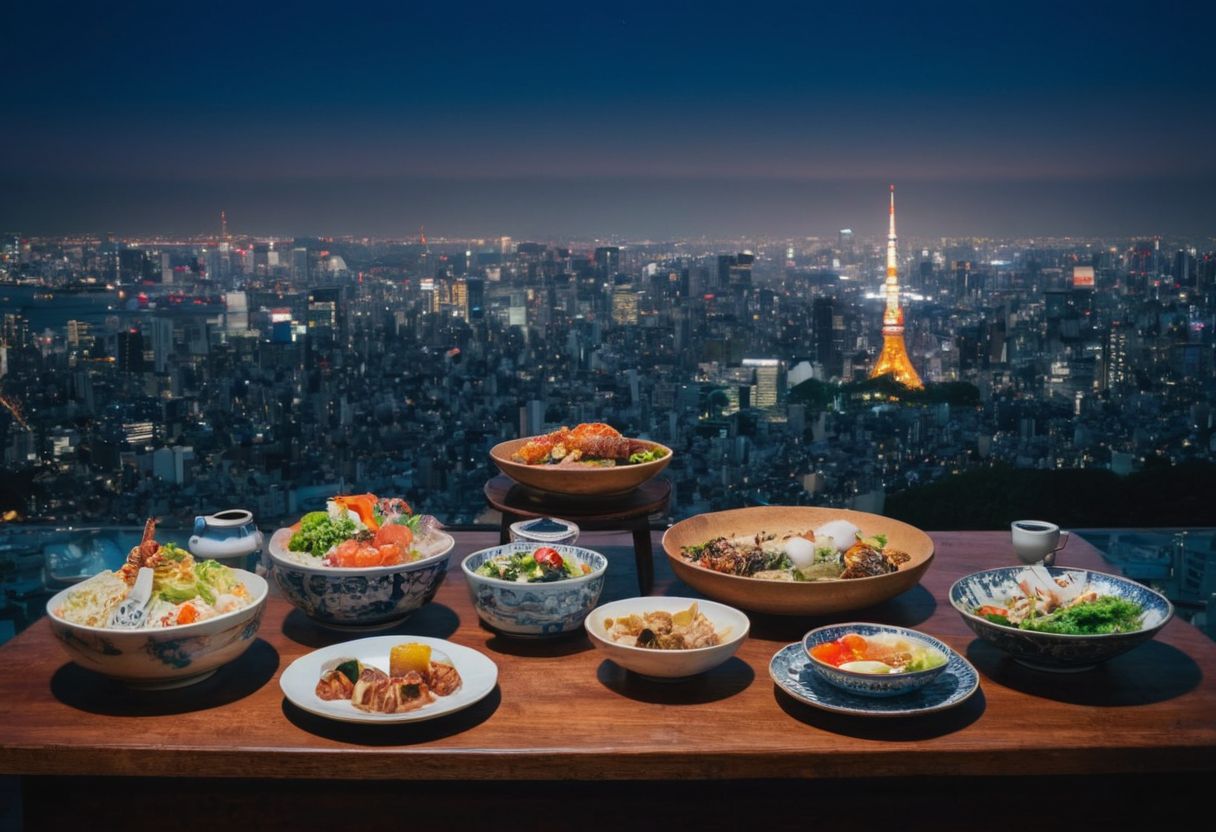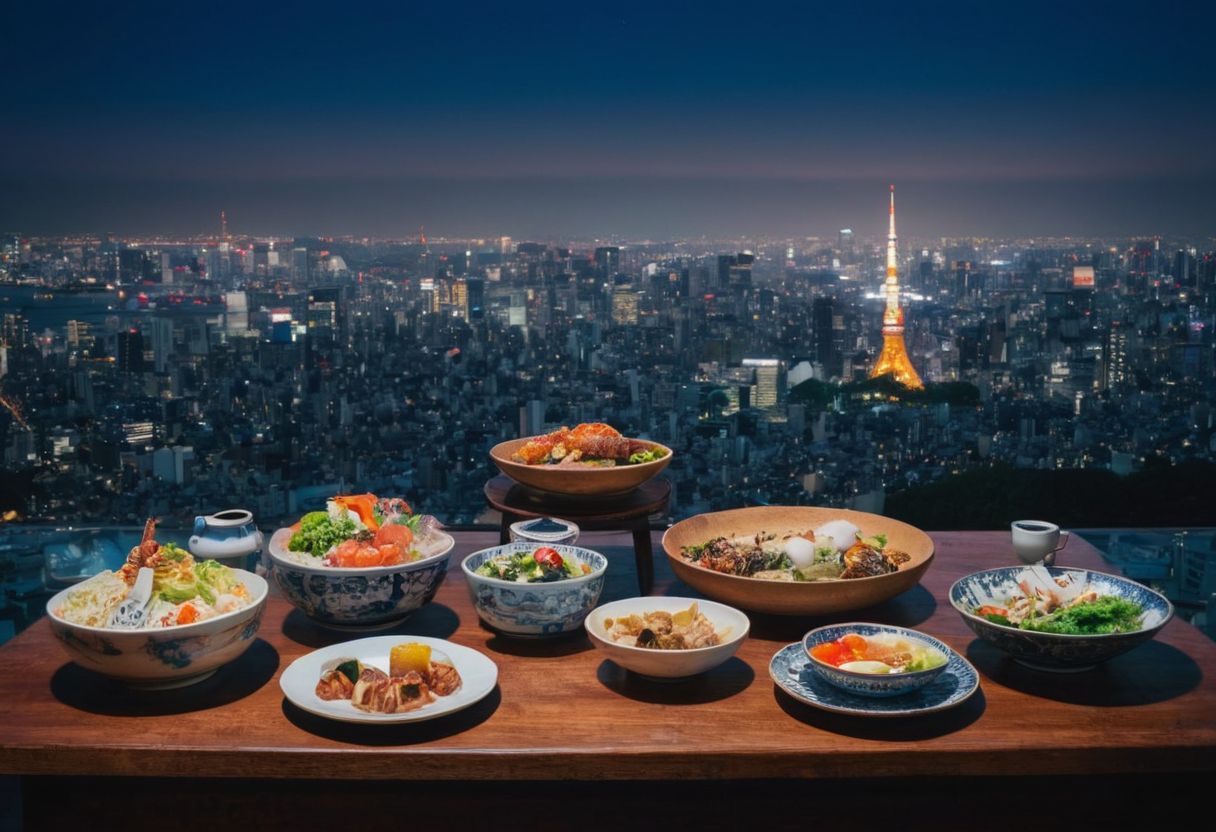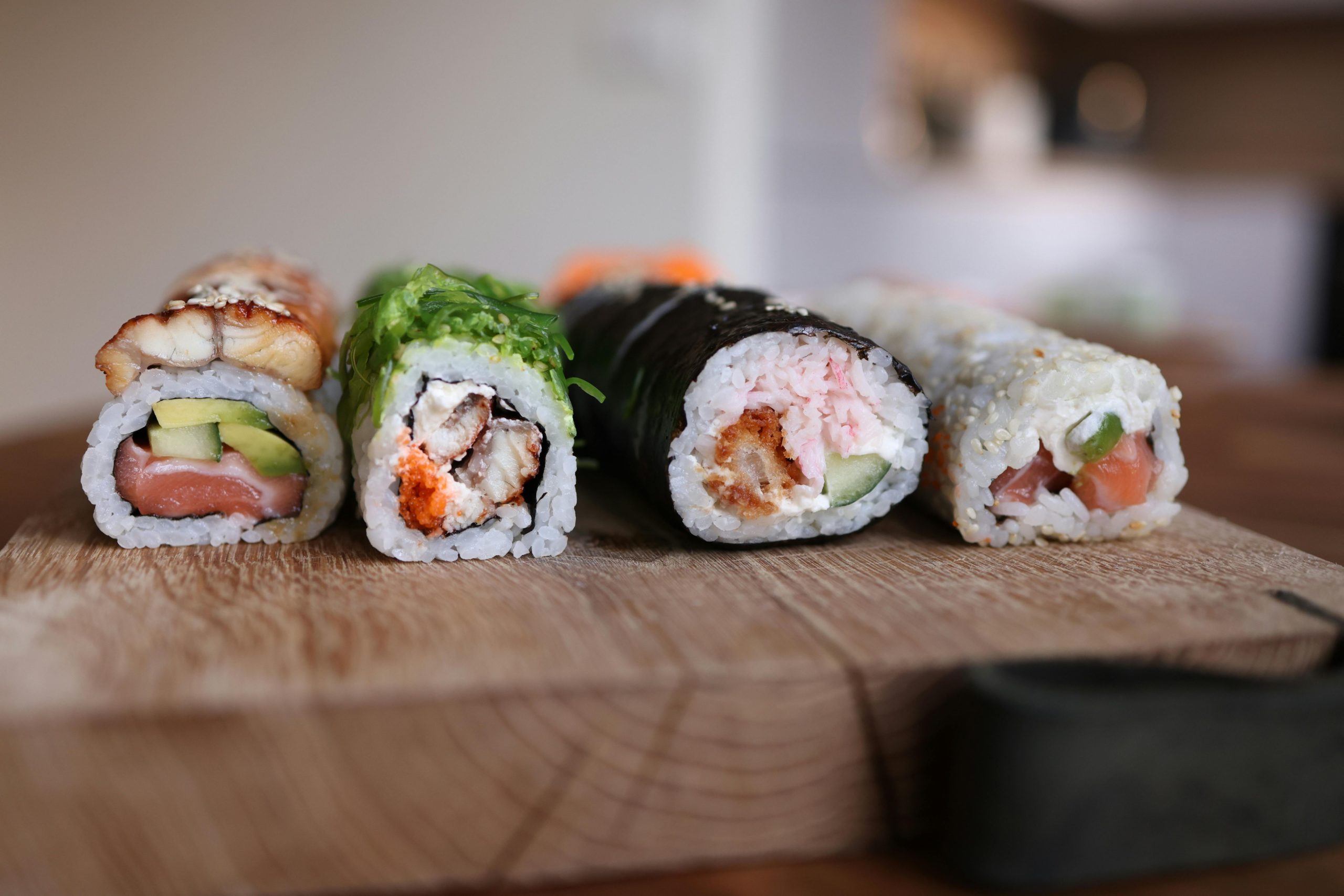Have you ever wondered about the subtle charm of Japanese confections?
Navigating the world of traditional Japanese desserts can be confusing with so many similar yet distinct treats.
Dango mochi, distinct from mochi, is made from rice flour and offers a unique texture and flavor that sets it apart.
In this culinary guide, we’ll explore everything from the essential ingredients and preparation methods to the cultural significance and various recipes that highlight the delightful dango mochi.
Essential Ingredients for Making Dango Mochi

Making dango mochi requires a few essential ingredients that are both simple and widely available. The primary ingredient is glutinous rice flour or mochiko, which provides the unique chewy texture. Water is then mixed with the flour to form a dough. Sweeteners such as sugar are commonly added to enhance the flavor. These ingredients are easily found in most grocery stores or Asian markets, making it convenient for anyone wanting to try their hand at this traditional Japanese treat.
In addition to the basic ingredients, potato starch is often used for dusting the dango mochi to prevent sticking. This is particularly important when forming the dango into shapes or before cooking. For those looking to experiment, other types of sweet rice flour can also be used, but mochiko is preferred for its fine texture and ability to absorb liquids well. These components are crucial for achieving the authentic taste and texture of dango mochi.
Nutritional Insights of Dango Mochi
Dango mochi is not only delicious but also offers some nutritional benefits. A typical serving of dango mochi contains about 120 calories, with minimal fat and about 25 grams of carbohydrates. It’s a low-fat and cholesterol-free option, making it a suitable sweet treat for those monitoring their intake. Additionally, it provides small amounts of protein and is very low in sodium, which is beneficial for maintaining a balanced diet.
Topping Varieties to Enhance Your Dango Mochi

To enhance the flavor and visual appeal of your dango mochi, consider adding various toppings. Sweet soy glaze is a popular choice that provides a savory contrast to the sweet dango. Alternatively, red bean paste offers a traditional complement that is both sweet and slightly earthy. These toppings not only add depth to the flavor but also make the dango mochi more visually enticing.
For those who enjoy a bit of texture and color, matcha powder can be dusted on or incorporated into the dough for a subtle tea flavor and vibrant green color. During cherry blossom season, a sprinkle of cherry blossoms can be a delightful nod to traditional Japanese aesthetics. These variations allow for personalization of the dango mochi, catering to different tastes and occasions.
How to Prepare and Cook Dango Mochi
Preparing and cooking dango mochi is a delightful experience that can be easily mastered with a few key steps. First, gather your ingredients: glutinous rice flour (mochiko), water, and sugar. For a basic dango dough, mix 1 cup of mochiko with about ¾ cup of water and 2 tablespoons of sugar. This mixture should form a smooth, pliable dough that’s not too sticky.
Once your dough is ready, it’s time to shape the dango. Pinch off pieces of the dough and roll them into small, even-sized balls. Ensure that these dango balls are smooth and free of cracks to prevent them from breaking when cooked. Here are some tips for shaping:
- Keep your hands wet to prevent sticking.
- Roll gently between your palms to form perfect spheres.
- If the dough feels dry, add a few drops of water to adjust consistency.
Cooking dango mochi is straightforward. Boil a pot of water and gently drop in the dango balls. They are ready once they float to the surface, indicating they are fully cooked. For a bouncy texture, immediately transfer them into cold water after boiling. This stops the cooking process and enhances their chewy texture. Finally, skewer the dango with bamboo skewers and they’re ready to be served with your favorite topping.
Pro Tips for Perfect Dango Mochi Every Time
Achieving perfect dango mochi every time requires attention to detail and practice. Key tips include using precisely measured ingredients and adjusting the dough consistency by adding cup water gradually until the desired texture is achieved. It’s crucial to ensure the cooking water is at a gentle boil to avoid breaking the dango balls. Additionally, cooling the dango immediately after boiling helps maintain a bouncy texture and prevents them from becoming soggy. With these pro tips, your dango mochi will turn out great every time.
Diverse Recipes Featuring Dango Mochi

Dango mochi’s versatility shines in the kitchen, where it can be transformed into an array of delectable dishes. From the traditional Hanami Dango, often enjoyed during cherry blossom viewings, to more inventive recipes like Dango Soup and Dango Salad, there’s a dango dish for every palate. These recipes highlight the adaptability of dango mochi, making it a favorite among those who love to experiment with flavors and textures.
For those with a sweet tooth, incorporating dango mochi into desserts can add a unique twist. Imagine a Dango Mochi Ice Cream where chewy dango pieces are mixed into creamy vanilla ice cream, or a Dango Mochi Cake, where dango is baked into the batter, offering bursts of chewiness in every bite. These creative uses not only enhance the dishes but also bring a touch of Japanese tradition to your dessert table.
The Historical Journey of Dango Mochi
Dango mochi has a storied past that stretches back to Japan’s Heian period, where it was first used in religious ceremonies. Originally made from millet flour, dango mochi was considered sacred, enhancing its allure. Over the centuries, the recipe evolved, transitioning primarily to glutinous rice flour, which offered a chewier texture that became popular among the masses.
By the Edo period in the 1700s, dango mochi had become a common sight at street stalls and festivals, often enjoyed with green tea. This period marked significant growth in its popularity, making it a staple in Japanese cuisine. Today, dango mochi continues to be celebrated across Japan, available in various flavors and forms, and remains integral to many festivals and special occasions.
Distinguishing Dango Mochi from Related Japanese Desserts
Distinguishing dango mochi from other Japanese desserts like mochi or daifuku can be tricky due to their similar ingredients and appearance. Dango is typically made from rice flour mixed with water and then formed into dumplings, which are often skewered and grilled. Mochi, on the other hand, involves pounding steamed rice into a paste, which is then molded around fillings or eaten plain. Both are chewy and can be sweetened, but their textures and preparation methods set them apart.
Daifuku is a close relative of mochi, often causing confusion. It consists of mochi dough filled with sweet red bean paste or other fillings, making it a filled version of mochi. Unlike dango, which is generally skewered and includes no fillings, daifuku offers a surprise center. Recognizing these key differences helps in appreciating the unique qualities of each dessert:
- Dango: Skewered, often grilled, no fillings
- Mochi: Soft, pounded rice, sometimes filled
- Daifuku: Mochi with a sweet filling
Best Practices for Storing Dango Mochi
To ensure your dango mochi remains fresh and delicious, storing it properly is key. Always place dango mochi in an airtight container to prevent it from drying out or absorbing odors from other foods. This container should then be kept in a cool, dry place if consuming within a day or two. For longer storage, refrigerate the airtight container, though be mindful that refrigeration can slightly alter the texture, making the mochi firmer. If you prefer a softer texture, simply allow the mochi to return to room temperature before enjoying it.
Discover More with Our Culinary Tours: Explore Dango Mochi
For those eager to dive deeper into the fascinating world of Japanese desserts, INDULGE offers specialized culinary tours that spotlight dango mochi among other Japanese treats. These tours are not just about tasting; they’re an immersive journey into the culture and intricate art behind these traditional sweets. You’ll get to see firsthand how dango mochi is prepared and learn from experts who have perfected their craft over many years.
Participating in a culinary tour with INDULGE provides a unique opportunity to:
- Experience the authentic preparation methods of dango mochi
- Interact with local chefs and culinary artisans
- Discover the subtle differences between various types of traditional Japanese desserts
This enriching experience is designed to deepen your appreciation of Japanese cuisine and provide a deeper connection to its cultural roots.
Frequently Asked Questions
What is dango mochi?
Dango mochi is a traditional Japanese dessert made from rice flour mixed with water to form a dough, which is then shaped into dumplings. These dumplings are often skewered, and can be grilled or served with various toppings. It is known for its chewy texture and can be sweetened or flavored in different ways.
What is dango supposed to taste like?
Dango typically has a subtly sweet flavor, especially when sugar is added to the dough. It can also take on savory notes depending on the toppings used, such as sweet soy glaze or red bean paste. The flavor is often enhanced by the addition of various toppings like matcha powder or cherry blossoms, providing a range of taste experiences from sweet to earthy.
What is the difference between daifuku and dango mochi?
Dango mochi and daifuku are both Japanese desserts made from glutinous rice, but they differ in preparation and presentation. Dango mochi is made from rice flour mixed with water and shaped into dumplings, often skewered and without fillings. Daifuku, on the other hand, consists of mochi dough that is filled with sweet red bean paste or other fillings, offering a surprise center. The main distinction lies in daifuku being a filled dessert, whereas dango mochi is typically not filled.

